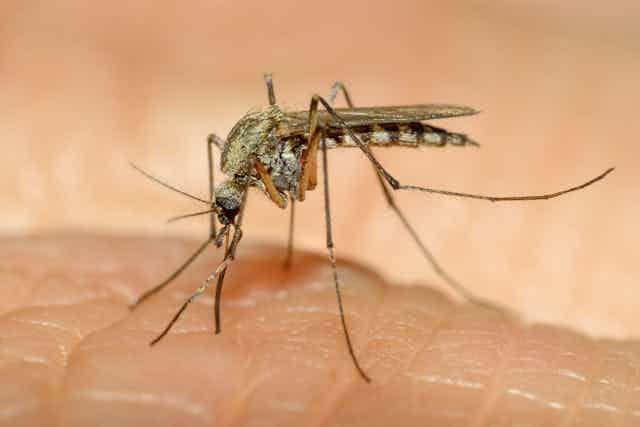The immune system protects us from the constant onslaught of viruses, bacteria and other types of pathogens we encounter throughout life. It also remembers past infections so it can fight them off more easily the next time we encounter them.
But the immune system can sometimes misbehave. It can start attacking its own proteins, rather than the infection, causing autoimmunity. Or, it can effectively respond to one variant of a virus, but then is unable to stop another variant of the virus. This is termed the original antigenic sin (OAS).
OAS occurs when the initial successful immune response blocks an effective response when the person is next exposed to the virus. This can have potentially devastating consequences for illnesses such as the mosquito-borne dengue.
There are around 400 million dengue infections worldwide each year and no vaccine is available. Reinfection of someone who has been exposed to dengue previously can result in life-threatening hemorrhagic fever.
OAS is also thought to limit our immune responses to the highly variable influenza virus, increasing the chance of pandemics.
To understand why OAS occurs, we need to go back to basics about how immunity is formed.
The race begins
When a virus enters the body, a race begins between responding immune cells and the infecting pathogen. The pathogen replicates and finds a target cell or organ that will allow it to thrive.
So, the effectiveness of a response depends on the immune system winning the race to clear the pathogen before it causes irreversible damage to the body.
Immune cells called “B cells” make antibodies. A pathogen such as a virus is a large molecule with different components, called antigens. When a B cell recognises an antigen, it is activated and interacts with other immune cells to receive directions.
Quality control
B cells then set out on two main paths. Some of the cells begin to make an antibody early in the response. But this antibody is often not of sufficient quality to rid the body of the infection.
The B cells that choose the alternate pathway go through a process that improves the quality of the antibody. This strengthens the binding between antibody and antigen. Antibodies are also grouped depending on the way they help eliminate the pathogen.
Some groups are better at clearing viruses and other pathogens. So, the antibody group that is tailored to be most effective at clearing the type of infection comes to dominate the response over this period.
Although the increase in quality of antibody can take weeks, there are two critical benefits. It means the pathogen is cleared. And high-quality “memory” cells remain to provide us with immunity to future infections.
Memory cells
Immune memory cells consist of long-lived plasma cells and memory B cells. Long-lived plasma cells live in the bone marrow and can continuously pump out high-quality antibody, providing a first wave of protection when we’re reinfected with a virus.
This is the same type of antibody that is transferred from mother to a breastfed baby, providing passive immunity against pathogens the mother has previously been infected with. But this level of antibody may not be enough to clear the infection.
This is where memory cells step in. Because memory cells have already undergone quality improvement, they can respond quickly after reinfection to produce a large number of plasma cells secreting high-quality antibody.
Therefore, memory cells can clear the infection much more rapidly than the initial infection. This means the pathogen doesn’t have time to damage the body.
When the quality improvement process fails
The quality improvement process that allows B cells to bind and clear the pathogen more effectively is highly selective to the dominating antigen.
In most responses to infection, this is critical to clear the infection. But in the case of some pathogens, such as dengue, the virus may have variant strains that can fool the immune memory response.
Dengue virus has four major variant serotypes. Within each major variant, one antigen dominates and is targeted by the immune system.
Infection by variant A results in extremely selective targeting towards antigen A. If the body is reinfected with the same variant (A), it can effectively clear the virus.
However, after reinfection by a second variant (in which antigen B dominates), immune memory cells recognise the virus, but they make antibody specific for antigen A, rather than the second variant, in which antigen B is now dominating.
So, antibody is being made but is unable to bind and eliminate the virus. To make matter worse, it appears that any new immune response to antigen B is inhibited by the memory response, although the reasons why this occurs are unclear.
Influenza is a highly variable virus, and these variations each season are why we require yearly vaccinations.
But the role of OAS in limiting our ability to respond to different variants of influenza is still highly controversial. Almost 60 years after OAS was proposed to describe the response to influenza infections, it is still a source of much current research.
How can we avoid OAS?
We need to train our immune system to be more flexible and produce antibodies that can adapt when viruses try to evade the immune system.
To this end, researchers are designing vaccines to respond to multiple variants of pathogens. This has shown promising results and may be the way forward to overcome OAS for potentially life-threatening viruses such as dengue.

